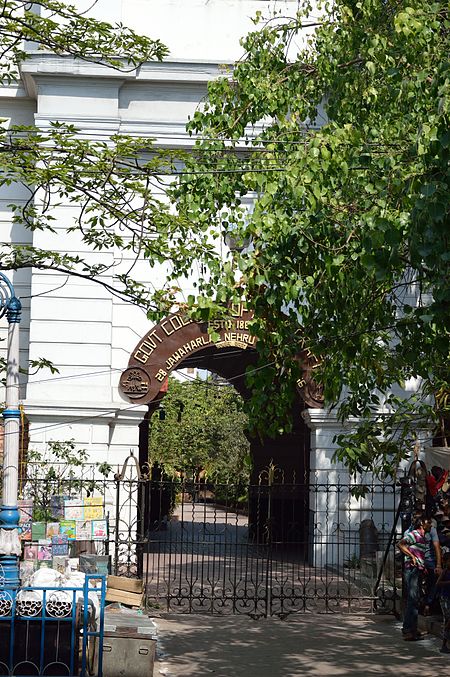Government College of Art & Craft
1854 establishments in IndiaArt schools in IndiaArts organizations established in 1854Culture of KolkataEducational institutions established in 1854 ... and 3 more
EngvarB from April 2017Universities and colleges in KolkataUniversity of Calcutta affiliates

The Government College of Art & Craft (GCAC) in Kolkata is one of the oldest Art colleges in India. It was founded on August 16, 1854 at Garanhata, Chitpur, "with the purpose of establishing an institution for teaching the youth of all classes, industrial art based on scientific methods." as the School of Industrial Art. The institute was later renamed as the Government School of Art and in 1951 it became the Government College of Art & Craft.
Excerpt from the Wikipedia article Government College of Art & Craft (License: CC BY-SA 3.0, Authors, Images).Government College of Art & Craft
Kolkata Dharmatala (Kolkata)
Geographical coordinates (GPS) Address Nearby Places Show on map
Geographical coordinates (GPS)
| Latitude | Longitude |
|---|---|
| N 22.5571913 ° | E 88.3500542 ° |
Address
700001 Kolkata, Dharmatala (Kolkata)
West Bengal, India
Open on Google Maps








